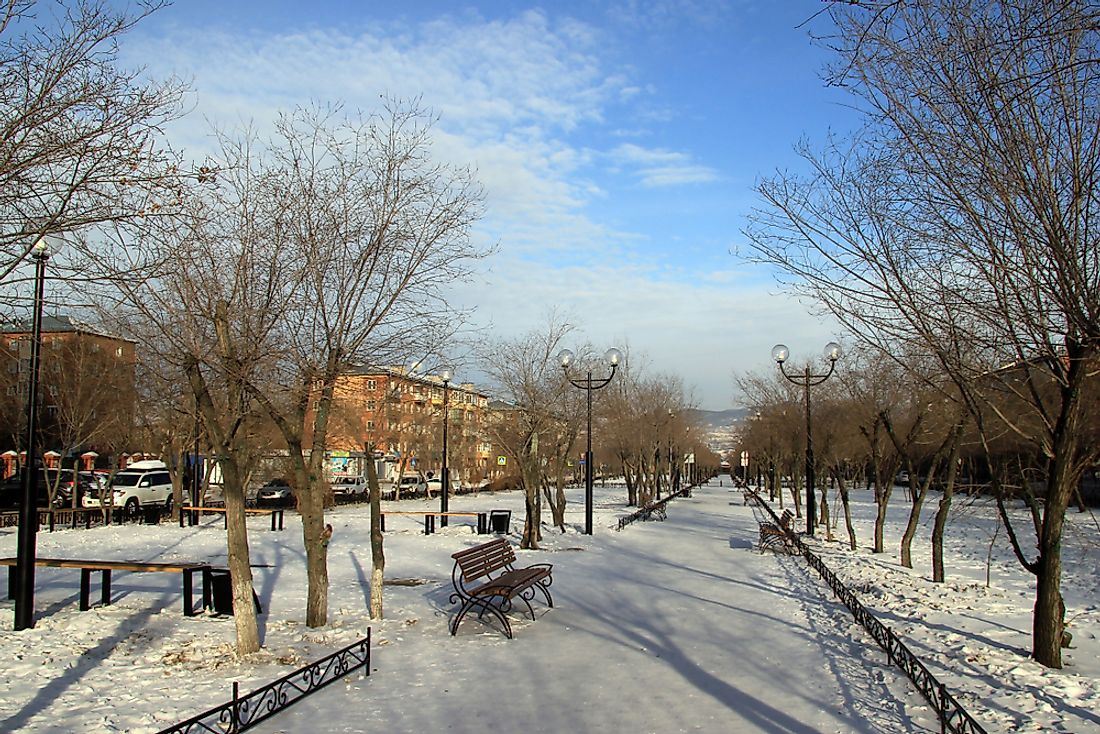Ulan-Ude – The Capital Of The Buryatia Republic

Buryatia is a Russian federal subject that is situated in Siberia which occupies an area of about 135,600 square miles. Buryatia is surrounded by Tuva, Zabaykalsky Krai, Irkutsk Oblast, Lake Balkan, and various Mongolian provinces (Selenge, Khovsgol, and Bulgan). It is in the Russian Far East, and it had a population of about 972,021 people in 2010. Buryatia occupies over 60% of Lake Baikal’s shoreline. Mount Munku-Sardyk is the highest point in Buryatia.
The Capital of Buryatia
Ulan-Ude is the capital and most populous city in Buryatia that had a population of 404,426 people in 2010. Ulan-Ude is the third-biggest city by population in the Russian Far East. Ulan-Ude is at the base of Ulan-Burgasy and Khamar-Daban mountain ranges right near the confluence of River Selenga and river Uda (its branch). It is 62 miles to the southeastern side of Lake Balkan and 3,500 miles to the east of Moscow.
History of Ulan-Ude
The first inhabitants of the region were the Evenks followed by the Buryats. The first Russian settlement in Ulan-Ude was established by the Russian Cossacks in 1966 when they built the Udinskoye fortress. Ulan-Ude grew faster and became a huge trading center that linked Russia to Mongolia and China. The first administrative center was developed in the Transbaikal region in 1690. The region was referred to as the Udinsk by 1775, but it became a city in 1783, and its name was changed to Verkhneudinsk. The city was rebuilt after being burned down by a fire in 1878. The arrival of the Trans-Siberian Railway in 1900 helped the city grow both in size and population at a very high rate. The city’s population grew from 3,500 (1880) to 126,000 (1939). Verkhneudinsk served as the capital of Far Eastern Republic from April 1920 to October 1920 before it was renamed Ulan-Ude on July 27, 1934.
Demographics
Ulan-Ude is the largest city in Eastern Siberia by population. The city’s population almost doubled from 1970 (253,600) to 2017 (431,922). According to the 2010 census, 62.1% of the residents were Russians, Buryats (31.9%), Ukrainians (0.6%), and Tatars (0.5%).
Climate
The city has short humid summers and long cool winters with low precipitation. Ulan-Ude has an average of 89 snowy days and 83 rainy days. The city experiences 2,418 sunshine hours per year with the highest temperature recorded in the city being 40.6°C. Ulan-Ude receives an average precipitation of about 10.5 inches annually. January is the coldest month in the Ulan-Ude when they record an average low of about -17.9°C and a high of approximately -0.4°C.
Culture
Ulan-Ude was closed to outsiders until 1991. There is a large ethnographic museum in the city showcasing the history of the region’s inhabitants. There are numerous old-merchant mansions that are decorated with stone carvings and wood at the city’s historic center along the river banks. There is a highly unusual and huge head statue of Vladimir Lenin at the central square. It is the world’s biggest head statue that was built in 1970. The statue weighs about 42 tons and its about 25 feet tall.











